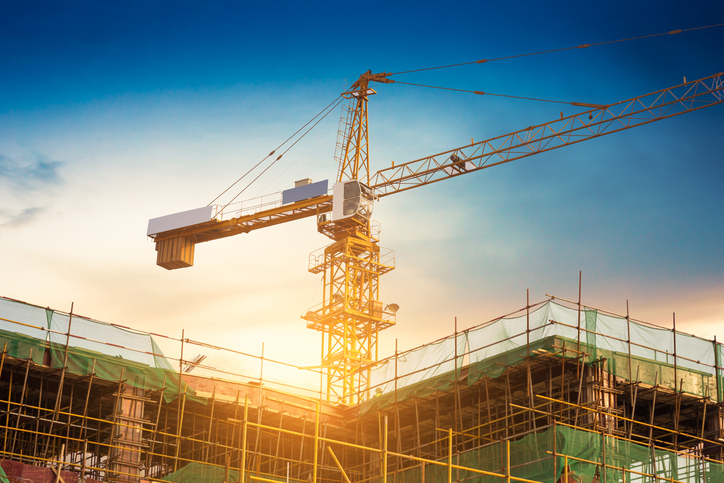Site security: checklist for unattended construction sites

Authored by QBE Risk Risk Solutions Practice Leader – Casualty & Construction
Construction sites may close during holidays and periods of inclement weather, so preparing for risks including unauthorised site access, fire and damage is crucial
Unattended construction sites are a common occurrence at various points throughout the year, with temporary closures during public holidays or severe weather – but this presents an attractive opportunity for criminals to trespass (increasing the risk of third party injury, damage, vandalism, theft and/or arson) and more recently, for ‘free-climbers’ and young people to take risks exploring buildings and equipment.
Security on construction sites falls into two categories: business assets and health and safety. Therefore, security failures have both a financial and a human cost, with an additional requirement for construction companies to safeguard members of the public.
In fact, construction businesses are liable for the safety of every person on site, even those who are unlawfully trespassing. Firms must take precautions under the Occupiers’ Liability Acts of 1957 and 1984 to secure construction sites and owned premises, taking responsibility for the safety of any person present, authorised to be on site or not.
The most likely unauthorised access on construction sites is from young people and ‘free-climbers’. The rise of social media has contributed to the trend of exploring and playing on construction sites, scaling cranes, and entering buildings. Unlike the trained workforce, young people and members of the public won’t be aware of the multiple dangers present and therefore accidents and injuries are likely.
Defining and maintaining the site perimeter is crucial for keeping unauthorised visitors away from construction work, both in and out of normal working hours. Many of the control measures for both public safety and physical security are the same and call for a joined-up approach.
Loss Mitigation
For site security best practice, it is recommended to build a project-specific security risk assessment, subject to review during periods of increased risk exposure. Firms should implement security measures that are appropriate and proportionate for the specific circumstances and equipment on site. Using local crime statistics data can also be useful in determining the level of control required. Consideration should also be given towards more vulnerable locations including those near educational establishments, recreational areas and local nightlife.
The risk assessment should include consideration of:
Controls
Review of security measures during increased risk periods, such as manned guarding, remote CCTV monitoring, security lighting, tannoy systems, and robust detection and response measuresCarry out end-of-day inspections (formal and recorded) to ensure the perimeter hoarding is of good standard, with any issues rectified urgentlyRemove from site those items known to be attractive targets to thieves including: survey equipment, compressors, machine attachments, and computer equipment. Where left on site, these items should be stored in anti-vandal container units. You should also consider additional measures to deter and delay thieves: signage, additional security lighting, an inner compound for any plant remaining on site. Buildings should be secured at ground-floor level: all openings should be robustly closed off. In high-risk areas, additional temporary CCTV and/or security patrols and guarding may be necessary.All cranes to have protections in place to reduce the likelihood of unauthorised persons attempting to climb including anti climb equipment, CCTV and secured caging around the base of the crane.
Site appeal
Remove easy access points such as ladders from scaffoldingCover excavations and large open ductworkConsider using solid site hoarding of significant height that restricts the view and is hard to climbMinimise the quantity of visible small plant equipment and fuel on-siteConsider implementing additional mobile plant security features such as immobilisers, GPS tracking devices, traceable liquid products and geofencingTake specific steps to prevent: falling objects (remove materials from scaffolding and store and stack materials away from the site perimeter); falls from height (barrier off or cover over excavations and pits, remove ladders from excavations and scaffolds); contact with hazardous substances (removed from site or stored in anti-vandal container units where safe to do so).
Fire risk
Minimise or move exposed combustible materials, storage and waste in preparation for any firework events in the areasEnsure that all temporary coverings are fire ratedProvide automatic fire detection with remote signalling on projects that have commenced fit out and also increased risk sites such as timber frame, combustible builds and sites located within vulnerable areas.
Higher standards of fire loss prevention for construction site security management can be achieved through best practice, most notably from the Joint Code of Practice – Fire Prevention on Construction Sites 10th Edition.
When a site is closed, the potential sources of ignition are dramatically reduced. However, with fewer or no people on site, detection of fire will take longer and could cause more damage as a result. The focus should be on minimising the combustibles on site, reducing the potential for electrical faults through isolations, and reviewing physical security arrangements to combat arson threat.
Public liaison
Ensure good public liaison procedures are in place, including contacting local schools and community centres to communicate warnings and share knowledge with young people about the hazardsSpeak with local residents to ask them to liaise with the site contact in the event of any issuesProvide a telephone contact number on the site hoarding that the public can use to report any issuesLiaise with public authorities such as the local police and fire brigade.
Download our free risk insight: Construction site security risk insight
QBE Risk Management
QBE customers can access a wide range of risk management services, self-assessment questionnaires and risk management guidance notes which are focused on the key causes of claims, and on generating action plans for improved outcomes – including protecting employees, reducing risk and making claims less likely.
You can find out more about how QBE helps businesses to manage risk here





